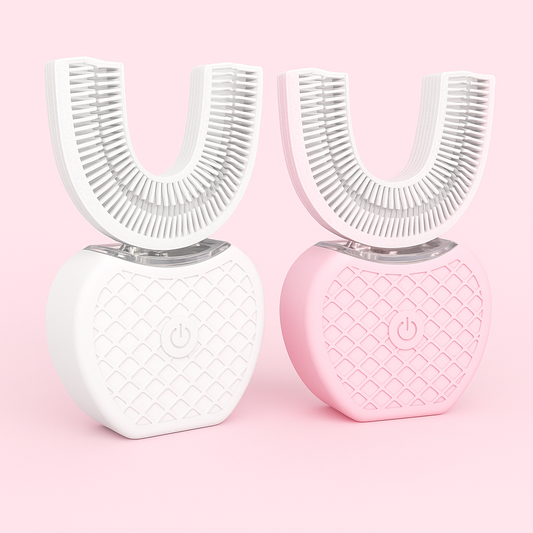Introduction to Xylitol Gum
Maintaining optimal oral health is more important than ever in 2025, as people become increasingly aware of the connection between dental hygiene and overall wellness. Among the many products designed to support dental care, xylitol gum has gained widespread recognition for its exceptional benefits in cavity prevention and breath freshness. This blog post will explore in depth why xylitol gum is considered the ultimate choice for oral health in 2025, backed by science, expert recommendations, and consumer satisfaction.
What Is Xylitol? Understanding This Unique Sugar Alcohol
Xylitol is a naturally occurring sugar alcohol found in various fruits, vegetables, and hardwoods. Structurally, it resembles sugar but has different metabolic effects in the human body and oral environment. Unlike sucrose or glucose, xylitol is not fermentable by the bacteria in the mouth, which is a key reason it does not contribute to tooth decay.
It has been used as a sugar substitute in many products including sugar-free candies, toothpaste, and chewing gum. Its sweet taste, similar to sugar but with fewer calories, makes it an attractive alternative for those aiming to reduce sugar consumption while supporting oral health.
The Science Behind Xylitol and Cavity Prevention
Dental caries (cavities) are caused primarily by acid-producing bacteria, with Streptococcus mutans being the most notorious culprit. These bacteria metabolize sugars from food and drinks to produce acids that erode tooth enamel over time.
Xylitol plays a critical role in interrupting this harmful process through several mechanisms:
- Inhibition of Bacterial Growth: Xylitol interferes with the metabolism of Streptococcus mutans. When bacteria take up xylitol, they cannot ferment it to produce acid, which weakens their ability to survive and reproduce.
- Reduction of Plaque Formation: By limiting bacterial growth and adherence, xylitol reduces the formation of dental plaque, which is a sticky biofilm that harbors harmful bacteria.
- Enhancement of Remineralization: Stimulated saliva flow due to chewing gum containing xylitol helps neutralize acids and supplies essential minerals like calcium and phosphate to damaged enamel surfaces, encouraging repair.
Multiple clinical studies have demonstrated that regular use of xylitol-containing products can reduce the incidence of cavities by up to 40% compared to non-xylitol controls.
How Xylitol Gum Enhances Oral Health Beyond Cavity Prevention
While cavity prevention is a primary benefit, xylitol gum offers several additional advantages that make it a comprehensive oral care solution:
- Saliva Stimulation: Chewing gum naturally stimulates saliva production. Saliva acts as a natural cleanser, washing away food debris and buffering acids in the mouth. In people with dry mouth conditions, xylitol gum can be especially beneficial in maintaining moisture.
- Reduction of Ear and Throat Infections: Some studies suggest xylitol may reduce the risk of middle ear infections by inhibiting the growth of bacteria responsible for those infections, likely due to its antibacterial properties.
- Improvement of Bad Breath (Halitosis): Bad breath is often caused by bacterial activity and dry mouth. Xylitol gum reduces bacterial populations and stimulates saliva, both of which contribute to fresher breath.
- Safe Sugar Alternative for Diabetics: Since xylitol has a low glycemic index, it does not cause blood sugar spikes, making it a safe sweetener for people managing diabetes.
Why Xylitol Gum Is the Ultimate Choice in 2025
The oral care landscape in 2025 is shaped by consumer demand for products that are both effective and natural. Here’s why xylitol gum meets and exceeds these expectations:
- Clinically Supported Efficacy: Extensive research continues to validate the dental benefits of xylitol. Dental professionals increasingly recommend xylitol gum as part of preventive oral care routines.
- Natural and Safe Ingredients: Xylitol is derived from natural sources, appealing to health-conscious consumers who avoid artificial sweeteners or harsh chemicals.
- Convenient and Cost-Effective: Unlike dental treatments that require appointments and high costs, xylitol gum is affordable and can be used anytime, anywhere, making oral care accessible to all.
- Eco-Friendly Packaging Innovations: In response to environmental concerns, many xylitol gum brands now offer biodegradable or recyclable packaging, aligning with sustainable living trends.
- Wide Availability and Variety: From mint to fruit flavors, sugar-free xylitol gums cater to diverse tastes, increasing compliance and enjoyment.
Expert Opinions and Recommendations
Leading dental associations, including the American Dental Association (ADA), recognize the benefits of xylitol gum. Many dentists recommend chewing xylitol gum as an adjunct to regular brushing and flossing, especially after meals when brushing is not immediately possible.
Dr. Emily Harper, a renowned dentist and oral health researcher, remarks, "Xylitol gum is an excellent preventive tool that complements traditional oral hygiene. Its ability to reduce harmful bacteria and promote remineralization makes it invaluable in our fight against cavities and bad breath."
How to Incorporate Xylitol Gum Into Your Daily Routine
To maximize the benefits of xylitol gum, consider the following best practices:
- Choose the Right Product: Look for gums containing at least 1 gram of xylitol per piece for effective results.
- Timing Is Key: Chew xylitol gum for about 5 to 10 minutes after meals and snacks to stimulate saliva and neutralize acids.
- Consistent Use: Regular chewing throughout the day, especially during periods when brushing is impractical, helps maintain oral health.
- Complementary Oral Care: Use xylitol gum alongside daily brushing twice a day and flossing once a day for comprehensive care.
- Avoid Overuse: While xylitol is safe, excessive consumption can cause digestive discomfort in some individuals, so moderate your intake.
Common Myths About Xylitol Gum Debunked
Despite its benefits, some misconceptions about xylitol gum persist. Let’s clarify them:
-
Myth: Xylitol Gum Completely Replaces Brushing.
Fact: While helpful, xylitol gum is a supplement, not a replacement, for brushing and flossing. -
Myth: Xylitol Is Harmful for Pets.
Fact: Xylitol is extremely toxic to dogs and certain other pets, so keep gum out of their reach. -
Myth: All Sugar-Free Gums Contain Xylitol.
Fact: Not all sugar-free gums have xylitol; some use other sweeteners like sorbitol or aspartame, which do not provide the same dental benefits.
The Environmental Impact of Choosing Xylitol Gum
In 2025, consumers are increasingly mindful of the environmental footprint of their purchases. Xylitol gum manufacturers are responding with innovations such as:
- Biodegradable Gum Bases: Traditional gum bases are not biodegradable and contribute to litter. New formulations using natural ingredients are gaining popularity.
- Sustainable Sourcing: Xylitol extracted from sustainably managed hardwood forests or corn cobs reduces environmental impact.
- Recyclable and Minimalist Packaging: Many brands are reducing plastic use and improving recyclability to align with green consumer values.
Conclusion: Embrace Xylitol Gum for a Healthier Smile in 2025
As dental science advances and oral care products evolve, xylitol gum stands out as a proven, natural, and convenient choice to prevent cavities and maintain fresh breath. Its ability to inhibit harmful bacteria, stimulate saliva, and promote enamel repair makes it an indispensable tool in the fight against tooth decay and bad breath.
Incorporating xylitol gum into your daily routine, alongside regular dental hygiene practices, can significantly enhance your oral health and confidence. Choose xylitol gum in 2025 to enjoy a brighter smile, fresher breath, and a healthier mouth—one chew at a time.


